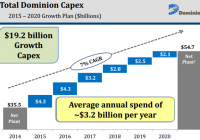It’s Time For General American Investors To Take Action
Insider buying has picked up in the last couple of weeks. Shares currently trade at a discount of 15% to net asset value. Company has augmented its share repurchase program and more action could be on the horizon. By Andrew Sebastian General American Investors (NYSE: GAM ) operates as a closed-end fund with investments in the global equity markets and utilizes a fundamental, bottom-up approach to stock-picking. Insiders have been buying shares as of late with Jeffrey Priest, GAM’s CEO and portfolio manager, leading the way with the purchase of 6,000 shares in the last 30 days. Joining Priest were Anang Majmudar and Eugene Stark, both vice presidents at GAM, with purchases of 885 shares and 2,440 shares, respectively, over that same time. On the flip side, Spencer Davidson, the company’s chairman, sold 2,000 shares of GAM during this time. Hedge fund Levin Capital Strategies had an unchanged position in the shares of GAM with 24,869 shares of the investment manager. Two other funds, however, sold out of substantial stakes in GAM. Weiss Asset Management dumped 60,410 shares and Mariner Investment Group sold out of a 24,452 share position. We are interested in insider transactions because studies show that insider trading can produce alpha. Academic research shows that certain insider purchases have outperformed the market by an average of 7 percentage points per year. While there are many reasons why an insider would sell, there is only one reason why an insider would buy and the insiders have been net buyers of GAM as of late. In addition to following insiders, another way to beat the market is by following the small-cap stock picks of hedge funds. GAM is a small-cap stock with a market cap of $1 billion. Our research shows that the 15 most popular small-cap stocks among hedge funds have outperformed the market by nearly a percentage point per month between 1999 and 2012. We have been forward testing the performance of these stock picks since the end of August 2012, and they managed to return more than 132% over the ensuing 2.5 years – outperforming the S&P 500 Index by nearly 80 percentage points ( read the details here ). Unlike insiders, hedge funds have been net sellers of GAM as of their latest filings, so it is not one of those popular small-cap picks. Nonetheless, the company offers up some interesting valuation metrics. GAM currently trades at a discount of 15% to its net asset value, which is more than the discount has been on average over the last six months and over the last three years when it was closer to 14%. The company has aggressively been buying back shares in order to close this gap and reward stakeholders, repurchasing about 626,000 shares in the first quarter. In comparison, GAM repurchased only about 541,000 shares in all of 2014. The company also recently received authorization from its board to repurchase another 1,000,000 shares if the discount to net asset value is 8% or more – meaning that GAM has a lot of share repurchasing still to do. Some shareholders have grown weary of the substantial discount and investment manager Special Opportunities Fund has requested that GAM make a tender offer for all of the outstanding shares of GAM at or near net asset value. If GAM were to go through with such a proposal, holders of GAM could realize a return upwards of 17%. Special Opportunities also suggested converting GAM into an exchange traded or open-end mutual fund in order for the closed-end fund to realize its net asset value more closely. Special Opportunities also suggested liquidating the fund altogether. GAM’s discount to net asset value is substantial even for a closed-end fund and the company’s management should do more to close the gap. The hedge funds exiting their positions in GAM likely grew impatient with the company’s growing and stubborn discount. Special Opportunities’ proposals should be wholeheartedly considered by GAM and put in motion if share repurchases or other measures do not significantly reduce the discount. Perhaps GAM’s insiders’ recent buying of the fund’s shares alludes to a future move on this front. If the discount were to grow any wider, shareholder activism would only grow, so a move by GAM is likely on the horizon in order to minimize the valuation gap. Thus, GAM could lead to a significant gain in the interim with the only substantial risk that action does not happen sooner. Disclosure: I/we have no positions in any stocks mentioned, and no plans to initiate any positions within the next 72 hours. (More…) I wrote this article myself, and it expresses my own opinions. I am not receiving compensation for it (other than from Seeking Alpha). I have no business relationship with any company whose stock is mentioned in this article.

